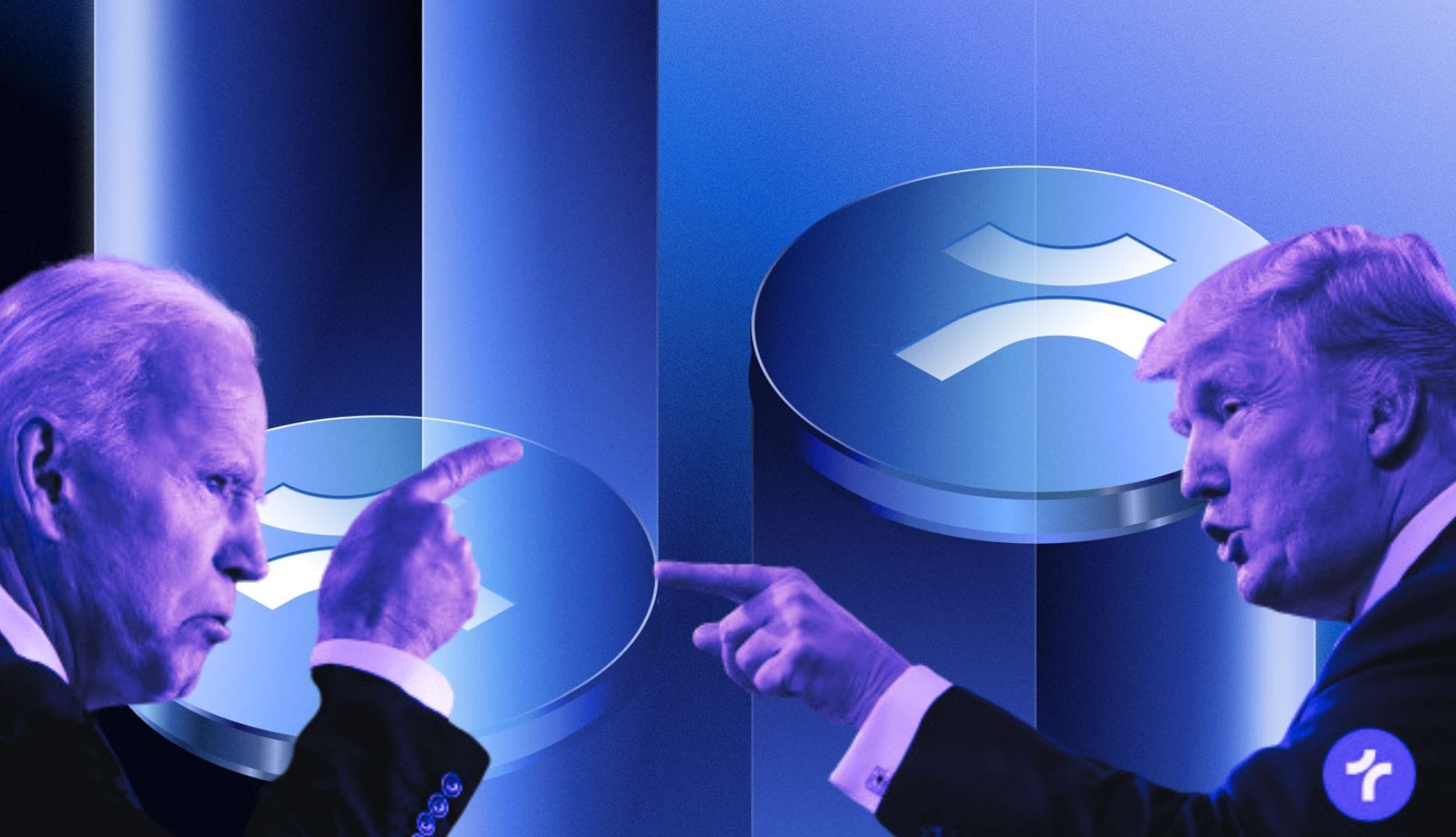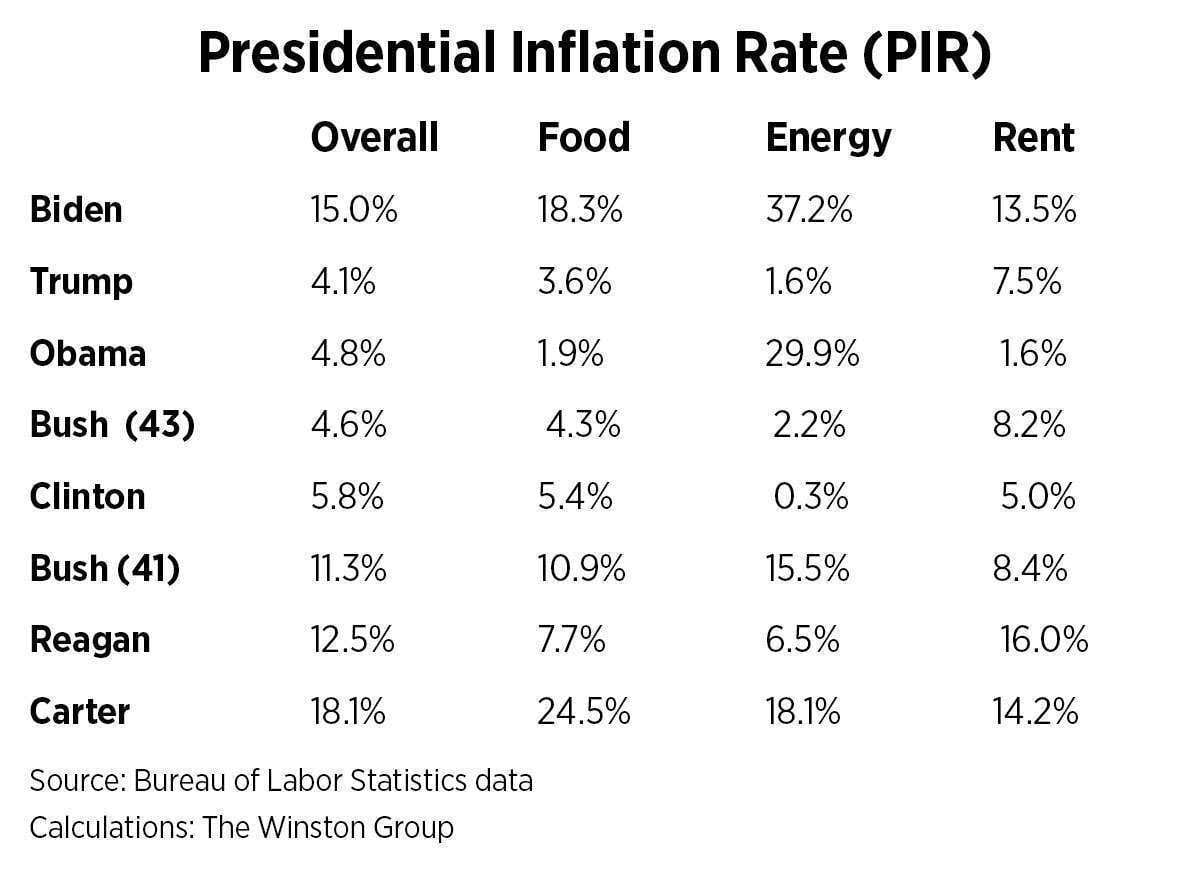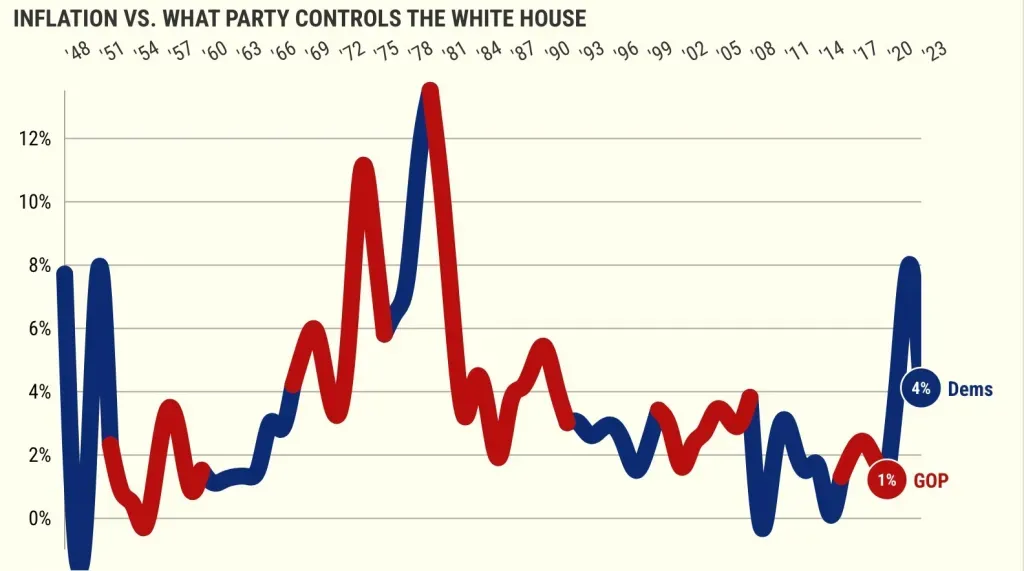US Presidential Administrations and Their Impact on Inflation

The 2024 election campaign for US president is proving to be dominated by a single issue, inflation.
Voters are feeling frustrated with inflation and the overall economy.
The latest CBS News poll found that 72% of Americans say higher prices have been a hardship or more difficult, and 63% rate the economy as fairly bad or very bad.
The latest survey conducted by CNBC/SurveyMonkey showed that about two-thirds, 65%, of adults said inflation is the main driver of their financial stress. The same amount of people in that survey are living paycheck to paycheck, with nearly half feeling as though they are in a worse financial situation than five years ago.
Furthermore, in important election swing-states like Pennsylvania, voters are said to be watching Biden and Trump debates for information on inflation.

Inflation, the rate at which the general level of prices for goods and services rises, eroding purchasing power, is a complex economic phenomenon influenced by various factors including monetary policy, global events, and fiscal policy. U.S. presidential administrations have often been scrutinized for their role in influencing inflation. While presidents do not directly control inflation, their policies, appointments, and economic philosophies can significantly impact inflationary trends. Here, we examine specific administrations and their interactions with inflation, demonstrating how presidential actions have influenced inflation.
Franklin D. Roosevelt (1933-1945)
During the Great Depression, Franklin D. Roosevelt's administration implemented the New Deal, a series of programs and policies aimed at economic recovery. Roosevelt's policies focused on job creation, social security, and regulatory reforms. The impact on inflation was notable; initially, the U.S. experienced deflation, with the Consumer Price Index (CPI) falling by 27% from 1929 to 1933. However, by increasing government spending and intervention in the economy, inflation rose modestly by the late 1930s, helping to stabilize prices and restore economic growth.
Richard Nixon (1969-1974)
Richard Nixon’s presidency is often associated with significant inflationary pressures. Nixon inherited an economy with rising inflation due to the Vietnam War and expansive fiscal policies of the 1960s. To combat this, Nixon imposed wage and price controls in 1971, temporarily curbing inflation but leading to distortions in the economy. Despite these efforts, inflation surged due to the 1973 oil embargo, reaching an annual rate of 11% by 1974. Nixon’s decision to end the Bretton Woods system and move towards fiat currency also had long-term inflationary implications by increasing monetary supply flexibility.
Jimmy Carter (1977-1981)
The Carter administration faced severe inflation, peaking at 13.5% in 1980. This period, known as stagflation, was marked by high inflation and unemployment. Carter appointed Paul Volcker as Federal Reserve Chairman in 1979, whose aggressive monetary tightening policies eventually curbed inflation but led to a recession in the early 1980s. Carter’s administration, through Volcker’s actions, demonstrated the critical role of Federal Reserve independence in managing inflation.

Ronald Reagan (1981-1989)
Reagan inherited the high inflation of the late 1970s and early 1980s. His administration focused on supply-side economics, implementing significant tax cuts and deregulation. Reagan supported Volcker’s continued tight monetary policies, which successfully brought inflation down from 13.5% in 1980 to 3.2% by 1983. Reagan’s fiscal policies, coupled with Volcker’s monetary discipline, highlight the interaction between presidential policy and Federal Reserve actions in controlling inflation.
George H.W. Bush (1989-1993)
George H.W. Bush’s presidency saw relatively low inflation, averaging around 4%. However, economic growth was sluggish, leading to the 1990-1991 recession. Bush’s decision to increase taxes, despite his “no new taxes” pledge, aimed to reduce the budget deficit but had limited impact on inflation. This period underscores that while fiscal policy can influence economic conditions, its direct effect on inflation may be muted without corresponding monetary policy adjustments.
Bill Clinton (1993-2001)
Bill Clinton’s administration is often credited with robust economic growth and low inflation, averaging around 2.5%. Clinton’s policies focused on fiscal discipline, reducing the budget deficit, and promoting free trade. Appointing Alan Greenspan as Federal Reserve Chairman, who maintained moderate interest rates and controlled money supply growth, was pivotal. The Clinton era demonstrates how prudent fiscal management and supportive monetary policy can maintain low inflation.
Barack Obama (2009-2017)
Barack Obama took office during the Great Recession, a period of severe economic contraction and deflationary pressures. His administration’s response included significant fiscal stimulus through the American Recovery and Reinvestment Act. Inflation remained low, averaging around 1.5%, partly due to the Federal Reserve’s expansionary monetary policies, including quantitative easing. Obama’s tenure illustrates how fiscal stimulus, when coordinated with accommodative monetary policy, can prevent deflation without triggering high inflation.

Donald Trump (2017-2021)
Donald Trump’s administration experienced low inflation, averaging around 1.8%. His policies included significant tax cuts and deregulation aimed at stimulating economic growth. The COVID-19 pandemic in 2020 led to unprecedented fiscal stimulus measures, with inflation concerns initially muted due to suppressed demand. However, the subsequent economic recovery saw rising inflationary pressures, illustrating the lagged effect of expansive fiscal policies.
Presidents influence inflation indirectly through fiscal policies, regulatory actions, and appointments to the Federal Reserve. While monetary policy primarily drives inflation, presidential decisions on spending, taxation, and regulation create economic conditions that the Federal Reserve must navigate. Historical examples demonstrate that coordinated fiscal and monetary policies are crucial in managing inflation effectively. Presidents, through their economic philosophies and policy decisions, significantly impact the inflation landscape, underscoring the interconnectedness of fiscal and monetary policies.

